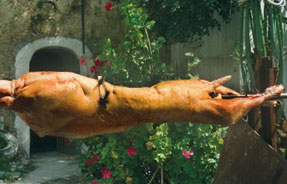How “fair price” led to less revenue for producers
May 22nd, 2009 | By Roger + Lina together
A “freakonimics” example:
It is a tradition in Crete to eat lamb for Easter – preferably lamb roasted on a spit.
This year, a consumers co-op that runs a chains of super-markets, intervening to help consumers and producers both get a good deal, created an unpredictable result: lack of lamb for consumers, less revenue for producers.
What they did: They agreed with the meat producers association to buy 7000 lambs at the “fair” price of 6 euros/kilo. And the lamb would be sold to consumers at 6 euros/kilo, at cost. Hoping, of course, while doing a “good deed” to benefit from the publicity and collateral sales in their shops.
What happened: When word got round about this, individual butchers across Crete dramatically reduced their orders of lamb before Easter, anticipating slow sales, as everyone would presumably rush to buy at 6 euros/kilo from the chain. Their prices would normally be higher. So who would buy from them? They didn’t want to get stuck with unsold lamb.
The result: the chain sold-out quickly, by Saturday (Easter eve, the peak day of lamb-buying) there was very little lamb on the market in Crete. Consumers had to drive around in search of lamb. Butchers found that many people did indeed go to them asking for lamb, but they had none to sell. Producers found they made overall less revenue because the butchers didn’t buy.
The consequences:
- Consumers had a harder time finding lamb for Easter
- Butchers got less sales, less revenue
- Producers got less sales, less revenue
See also:
- Freakonomics blog & Freakonomics book by Steven D. Levitt & Stephen J. Dubner
- “They run out of lambs” article (in Greek), on Nea Kriti newspaper

Yes, it happened this year (2009). We observed it ourselves too, at both the INKA super-market chain (that had run out on Saturday) and at local butchers that had limited amount of lamb left…that’s why I was intrigued to discover the cause.